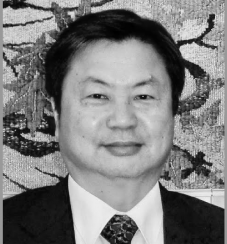DaeYoung (DY) KIM noted in his 2021 Internet Hall of Fame acceptance speech, “Professional, artistic cyber performances should be of such quality as can bring us emotional excitement comparable to what we experience with traditional performances in concert halls and theaters. One important technical distinction is that artists need not gather in a single physical place. Each may be performing remotely from distributed sites and still seem to be synchronized.”

This retired dean and former Information Communication Engineering professor at Chungnam National University in Daejeon, South Korea, has a special place in his heart for cultural exchange – especially when it comes to how the Internet can bring audiences and artists together.
From his small apartment in a peaceful, South Korean mountainside town (with a gigabit Ethernet connection, naturally), DY still advocates for advancing the collaborative nature of performing arts – dance, music, and theater. An amateur musician – DY sang and played guitar as a student, loves the Beatles, and today plays a traditional Korean bamboo flute – DY recently finished writing an English language history of ancient Korea.
“In any performance you want to present to the world, there should be infrastructure that can transmit the impressions and sights without deterioration in real time,” he says. “Because performance is not just one way – it needs to be interactive. This is technically very challenging and needs to be stable. Because of the advances in the Internet, the world of artists and performers will continue to expand to offer new platforms and welcome new audiences.”
While studying for his graduate degree in electronics communication at Korea Advanced Institute of Science and Technology (KAIST) in the mid-1970s, he developed an interest in data transmission over telephone lines. His Ph.D. advisor counseled DY to study digital transfer of audio and video in Germany, after which he returned to Korea to complete his doctorate degree in electrical engineering from KAIST, with a concentration in computer communication.
“In a broad sense, we wanted to send data, and all technology around that is called data communication. In a narrow sense, the Internet is about specific protocols for communication. That’s the area I started to tackle,” he says.
As South Korea started to build high speed Internet networks in the 1990s and early 2000s, DY found himself on committee after committee, and was an early member of APAN, the Asia-Pacific Advanced Network. The nonprofit group, formed in the late 1990s, continues to promote and facilitates network-enabled research and education. Not only did DY serve as the APAN Korean membership group’s chair, he also chaired the world-wide consortium from 2012-2015. Additionally, he was one of the early instrumental contributors in pushing for the development of the Trans Eurasian Information Network (TEIN), which launched in 2000 to better allow European and Asian academic researchers to share research and data.
As a professional high point, DY points to his championing of APAN’s exploration of the Internet as an innovative platform for presenting professional performing arts. In 2003, realizing the potential for sending video over the Internet, he offered to broadcast a colleague’s traditional Korean folk dance event live online. Known as DancingQ, this cyber-performance project globally relayed live dance performances on the Internet for 15 years – initially in uncompressed HD (2K) and later in UHD (4K). These real-time, interactive performances included participants from around the world.
“Because I’m an engineer, I realized just how amazing the technical team is behind a professional performance. They use whatever leading-edge technologies available. What I also realized is that performing arts is the area that requires the highest possible quality audio/video available, otherwise you can ruin the performance. From a technical point of view, this is the best application area where you can test the ability of your network and push it to the extreme. As long as you can satisfy technical, performing arts people, you’re doing well,” he says.
As part of his research, DY has published numerous studies on transmission codes and dynamic multicasting. He’s quick to point out that he wasn’t himself the developer of the technologies to handle compressed and uncompressed images and sound he used in his cyber performances. Instead, he says he considers himself an organizer, advocate, producer, and good negotiator, sometimes even with leading global companies to gain access to technology still in development. “Often groups have lab models not yet on the market – decoders, mixers, etc. In one project I remember telling a team that I’d be a beta tester for the highest, newest video and audio technology in the labs.”
These days, he’s interested in virtual reality and the metaverse, especially the use of avatars to bring singing, dancing, music, and theater to cyberspace. “I’m proud that I was one of a few people in the world that concentrated resources into cyber performances. I’m glad to see the world moving more into this direction. Maybe in time, there will be real metaverse cyber performances at a higher level. There’d surely be more teams around the world to share my enthusiasm, which is important to further advances. I’d like to see other crazy guys like me continue this,” he says.